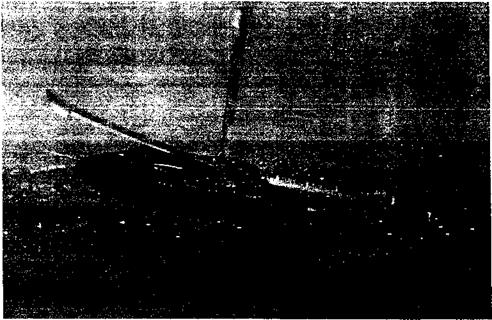Performance in Maneuvering Flight
Maneuver requirements will set the ultimate flight capability for a helicopter. Therefore, the prediction of the rotor airloads under maneuvering conditions forms an essential part of the overall design process. Yet this is a difficult task made even more complicated by the generally nonlinear aerodynamics of the rotor, and the complex kinematics of the rotor and the helicopter under most types of maneuvering flight conditions – see Padfield (1996) for an overview of the issues. Limiting aerodynamic factors in maneuvers may include stall and the effects of the wake, which can induce vibratory airloads from blade vortex interactions. The proper prediction of helicopter maneuvering performance is an illusive goal that will challenge helicopter analysts for years to come.
Maneuver issues are of particular importance for military helicopters – see Lappos (1984). A modem military helicopter may be required to perform maneuvers consisting of high load factor turns and pull-ups, steep turns and rollovers (see Fig. 5.39), arrested high rates of descent in combat landing zones, and quick pop-up-pop-down maneuvers for battlefield observation – see Thomson & Bradley (1990). Rotor stall issues are often a key consideration under these conditions because of the extra thrust demanded from the rotor, and sufficient stall margins must be incorporated into the rotor design. Both military and civil requirements will dictate the rotor capabilities that must be demonstrated without the rotor stalling. Maneuvers cause the rotor flapping response to lag with respect to the maneuver rates of the helicopter, which can also affect blade angles of attack and stall margins – see discussion in Section 6.9.3. Consideration of rotor noise levels and retention of good helicopter handling qualities have also become important factors in the design of helicopters with good maneuver capabilities.
The ability of a helicopter to maneuver (such as a pull-up or sustained horizontal turn) depends, in part, on the excess thrust possible from the rotor and the excess power available
|
Figure 5.39 A Lynx helicopter executing a steep banked turn maneuver. (Photo courtesy of Agusta-Westland via F. John Perry.) |
over and above that required for level, unaecelerated flight. The load factor on the rotor, n, can be defined as the net thrust of the rotor divided by the gross weight of the helicopter, that is, n = T/W. The ability to produce a given load factor on the rotor depends on: 1. The ability of the helicopter to actually sequence a maneuver with the use of normal flight controls; 2. The effective management of potential, translational kinetic, and rotor rotational kinetic energy by the pilot through the use of flight controls; 3. The excess energy or power available at that airspeed (i. e., having excess translational kinetic energy or an engine with sufficient power margin); 4. The ability of the rotor to actually use that excess power and produce a load factor without stalling (i. e., the rotor must be designed to have sufficient stall margin); and 5. The structural strength and aeroeiastic margins of the rotor at the higher accelerations and load factors associated with maneuvering flight. Therefore, the ability of the rotor to produce and sustain a load factor can be viewed as one measure of the ability of the helicopter to maneuver. The problem of defining a load factor, however, can be a relatively complicated one for a helicopter when all the kinematic relationships of AoA, sideslip and bank angle are taken into account; the load factor measured by an accelerometer on the aircraft is not necessarily the same as the load factor being produced by the rotor – see Chen & Jeske (1981).












